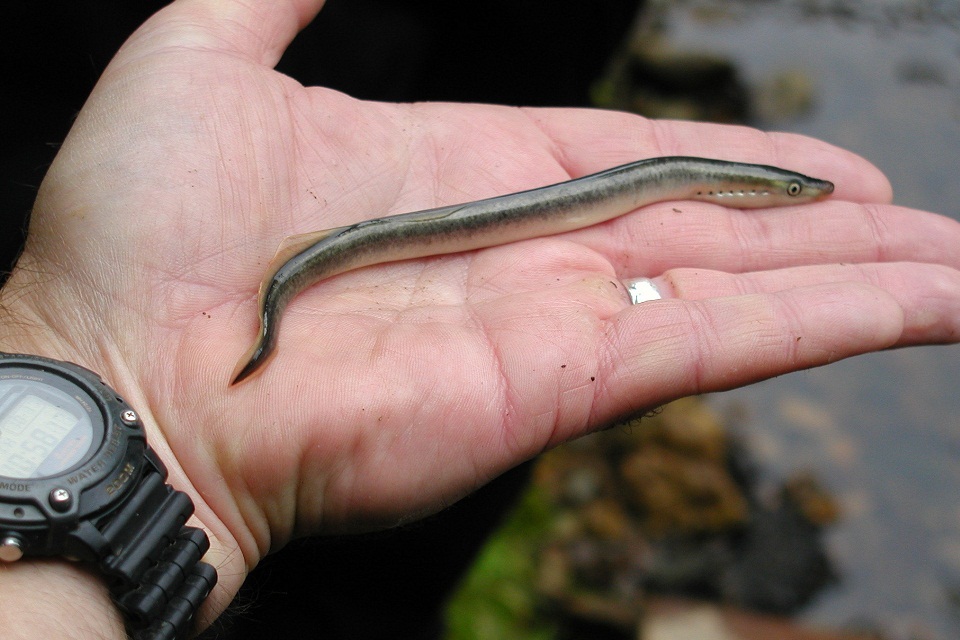Environment Agency reveals ‘secret seven’ fish
A 400-million-year-old blood-sucking creature once eaten by Vikings tops the Environment Agency’s list of England’s rarest fish.

Twaite Shad
A 400-million-year-old rare blood-sucking creature once eaten by Vikings and a relic from the Ice Age top the Environment Agency’s ‘secret seven’ list of England’s rarest fish, which it unveiled today.
Photographs of all seven species can be downloaded on flickr
The seven species are lamprey, Arctic charr, vendace, spined loach, allis shad, twaite shad and smelt. All seven species of fish are a conservation priority at a national and international level.
The reasons for their previous decline include historically poor water quality, barriers to migration and a changing climate. But now, all seven are starting to thrive again thanks to work by the Environment Agency and other conservation groups.
Alastair Driver, Environment Agency national biodiversity manager, said:
These rare fish are the unknown jewels of our rivers. The Environment Agency has a range of projects to support them and although England’s rivers are the healthiest for 20 years, there is still more to be done to improve their chances. Reintroducing meanders, breeding fish and removing weirs are among our key work to help these little-known fish thrive.
Lampreys are eel-like creatures, once eaten by Vikings, and pre-date dinosaurs by more than 200 million years. Thanks to the lowest levels of pollution seen for more than 100 years and the removal of barriers to their spawning migrations they are returning to many UK rivers. Where barriers cannot be removed, Environment Agency fisheries staff have fitted lamprey ‘tiles’ to existing weirs to help them get upstream. River and sea lamprey have now been found in the Yorkshire Ouse, where only 30 years ago they were absent. But lamprey are very secretive creatures and very little is known about their life at sea.

A Brook lamprey found in Kex Beck, Yorkshire
It is widely recognised that the majority of UK Arctic charr populations are in decline with increasing temperatures considered to be one of the greatest threats to their existence in UK waters. In 2005 the Environment Agency, with partners, set about reversing this trend. A barrier to migration was removed and land-use changes were implemented in order to improve water quality in an important charr-spawning stream. Fisheries experts collected ‘broodstock’ from Ennerdale Water and began rearing them at the Kielder Hatchery. The following year the young fish were released and this process continued through to 2013. The charr population showed a marked increase in terms of adult spawners. Now that the population is beginning to show signs of recovery, the project has entered a monitoring phase.
The herring-like vendace is the rarest native freshwater fish species in the UK. This silver fish is native to just two English lakes (Derwentwater and Bassenthwaite Lake in Cumbria). Their populations are impacted by lake siltation and the introduction of non-native species. The Environment Agency has been improving river habitats upstream of Derwentwater and working with others to prevent the introduction of more non-native species than could harm the vendace.
The spined loach is found in just five river catchments in the east of England – the Trent, Welland, Witham, Nene and Great Ouse. The easterly flowing direction of all these rivers is an indicator of the origins of the species. All these rivers were once a part of the Rhine catchment, at a time when the North Sea was a land mass. But when the North Sea cut off Great Britain off from mainland Europe the spined loach was stranded and hasn’t moved much since.
At one time, twaite shad were commonplace throughout the Severn Estuary and its rivers. During the 19th century many rivers were modified which has restricted shad, to the lower reaches of the river by preventing access to their historic spawning habitat. There are only four spawning twaite shad populations in the UK – the rivers Tywi, Usk, Wye and Severn. The Environment Agency is working on a project to secure funding for a project that will open up more than 230 km of historic spawning ground to support shad populations in the Severn Estuary. Allis shad is the twaite shad’s larger cousin and can grow up to four kg in weight.
The smelt is a small species of fish, related to trout and salmon, that lives in coastal areas of Britain. By the end of the twentieth century, there were fewer smelt populations, due to the effects of pollution in river estuaries, and the construction of weirs which stop the fish moving upstream to spawn. The situation is improving due to better water quality – investment in sewage treatment has reduced instances of low oxygen levels in estuaries. Work to improve fish passage, by the removal of weirs or the installation of fish passes, has benefitted all species of migrating fish, including smelt. In addition, smelt have been given additional protection by the creation of Marine Protected Areas.
ENDS
Photographs of all seven species can be downloaded on flickr